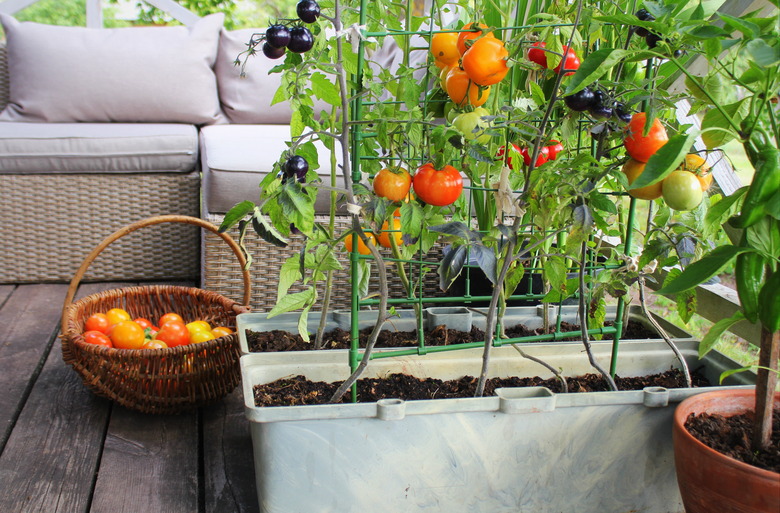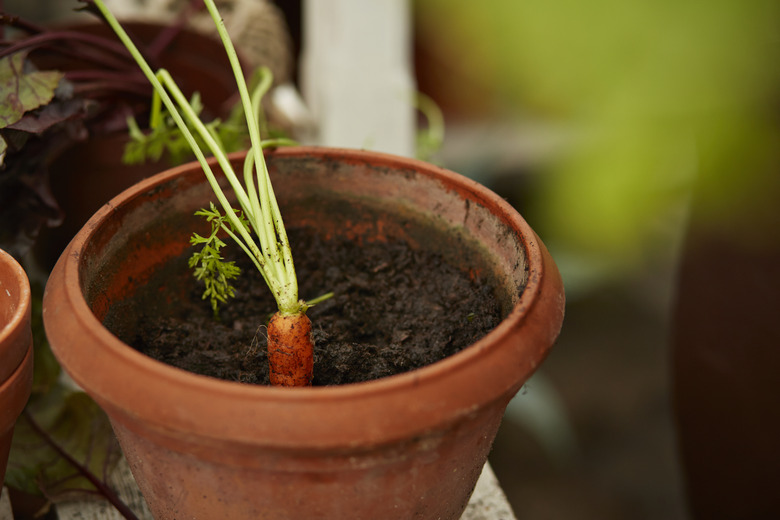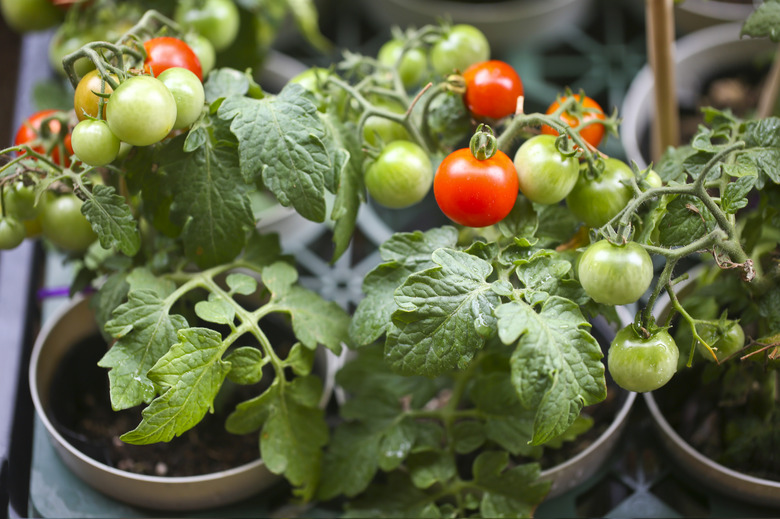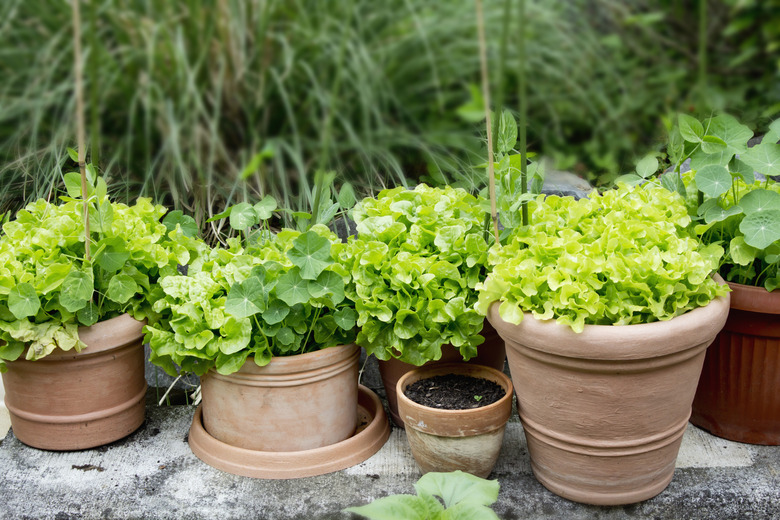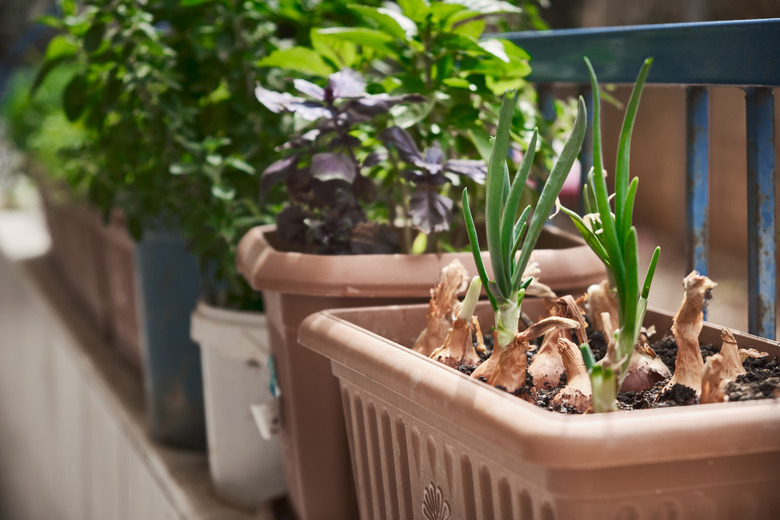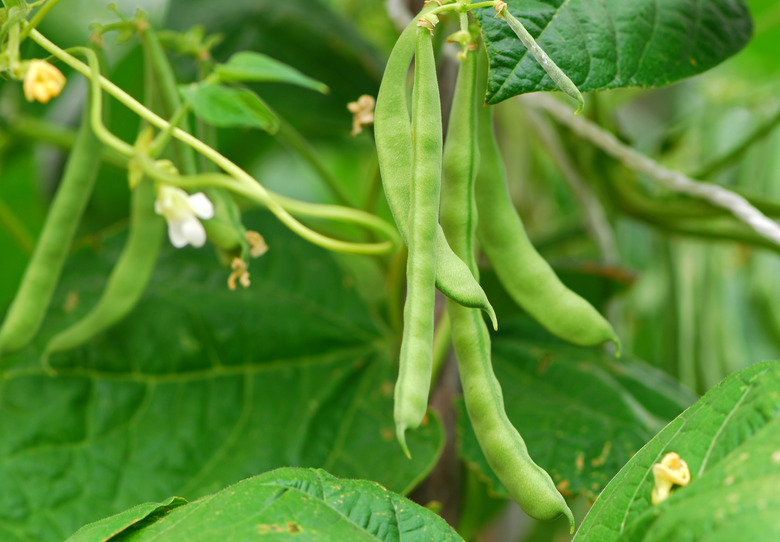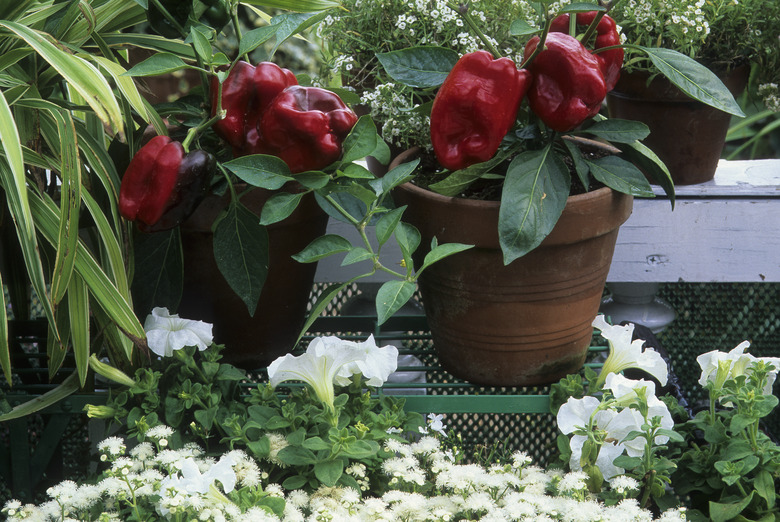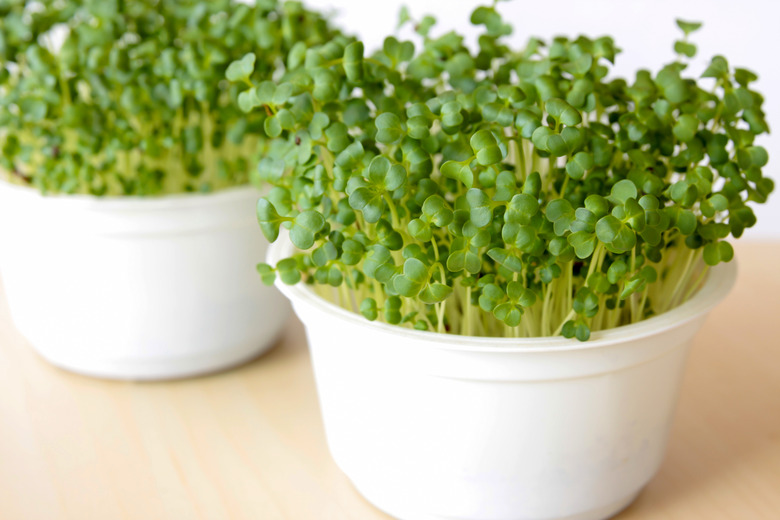The 7 Best Vegetables To Grow In Containers
Container vegetable gardening isn't just for apartment or small space dwellers. Although the practice of container gardening is great for renters and those with limited space, it's also a much more convenient way to garden. You can set your containers on the ground or on a table or stand to make your vegetables easier to harvest. This is a great option for older gardeners or those with issues that make kneeling in a garden plot difficult.
The trick to a bountiful container garden is to make sure the container you use is big enough to hold adequate soil to support the plants and has ample drainage holes. That's it. As long as it's big enough and drains well, you can grow vegetables in just about anything that will hold soil.
Want to grow your own food in a container garden? Here are seven of the best vegetables to plant.
1. Carrots
1. Carrots
Carrots (Daucus carota subsp. sativus) grow well in containers as long as you provide a deep-enough pot. While smaller varieties can work in a pot that's only 8 or 9 inches deep, it's generally best to make sure carrot pots are 12 inches deep. Keep the soil in your pot loose as well so it's easier for the carrots to push through as they grow.
To grow carrots in a container:
- Sow carrot seeds in your container after the danger of frost has passed. Sow the seeds about 1/4 inch deep. Carrot seeds are extremely small, so don't worry about spacing when you sow them.
- Thin them when the seedlings reach about 2 inches in height.
- After thinning, your carrots should be spaced about an inch apart.
- Place your carrots where they will get full sun and water them three times a week.
The ferny foliage on your carrot plants can reach a mature height of 36 inches, although some smaller cultivars may not grow this tall. They're ready to harvest when their orange color has fully developed, usually about 60 to 80 days after planting.
2. Tomatoes
2. Tomatoes
Technically, tomatoes (Solanum lycopersicum, USDA zones 10-11) are a fruit, but they're extremely popular in vegetable gardens, and a salad just isn't complete without them. When growing tomatoes in a pot, the bigger the pot, the better. The container must be at least 12 inches deep but use an even larger pot if you can.
To plant tomatoes in a container:
- Plant one tomato seedling in each pot. If you only have room for one or two pots, consider planting cherry tomatoes for a higher per-plant yield. The mature height of your plant will vary depending on the tomato variety you choose, and taller plants need staking in containers just as they do when planted in the garden.
- Place your tomato plants where they will get six to eight hours of direct sunlight per day and check their soil moisture daily. Tomatoes like moist (not wet) potting soil and may need watering every day when growing in containers, especially during hot weather.
- Pick them as they ripen and turn red. You can usually start harvesting tomatoes 60 to 100 days after planting depending on the cultivar.
Tip
If you live in USDA plant hardiness zones 1 through 3 where the growing season is short, be sure to choose a tomato cultivar that will have time to produce fruit in your area. On average, you can expect to get 8 pounds of tomatoes per plant.
3. Lettuce
3. Lettuce
Lettuce (Lactuca sativa) is an excellent choice for two reasons. It grows well in containers, and it's a cool-season vegetable, so it's often ready for harvest when other vegetables aren't quite ready yet. In hardiness zones 4 through 9, plant lettuce in the spring when the temperature reaches 55 degrees Fahrenheit and perhaps again in September for a fall harvest. If you live in hardiness zones 10 or warmer, however, you'll want to skip the spring planting. Instead, sow your lettuce in the fall and grow it during the winter.
Loose-leaf lettuce is the easiest to grow in containers. This shallow-rooting vegetable needs a container only about 6 inches deep. Another perk is that you need not worry about spacing when planting leaf lettuce. You can simply broadcast the lettuce seeds over the container and cover them with about 1/4 inch of soil.
To plant lettuce in a container:
- Start your lettuce indoors four to six weeks before the last frost in your area and set your young plants outside when the danger of frost has passed.
- Place the lettuce in full sun when you first put it outside but move the container to a partly shaded location as the weather warms.
- Water your lettuce as needed to keep the soil moist. Lettuce is a thirsty plant, so be prepared to water it daily.
Mature lettuce will be about 6 to 12 inches tall, depending on the cultivar, and you can harvest it as needed throughout the growing season as a cut-and-come-again crop. Simply cut off the leaves you want at their base at the soil using a sharp knife. Depending on the cultivar, lettuce is ready for harvest three to six weeks after planting.
4. Onions
4. Onions
Onions (Allium cepa, zones 5-10) grow easily in containers as long as you plant the right type. This cool-season vegetable has two types: short-day and long-day onions. Short-day onions need 10 to 12 hours of direct sunlight every day to thrive. Long-day onions need 14 hours of light per day. Gardeners who live in the southern states and other warm climates grow short-day onions, while gardeners in northern states and other cool climates typically grow long-day onions. There are also day-neutral onion cultivars that will grow well in most climates. Allium cepa 'Candy' is one such cultivar that grows well everywhere. Because they like cool weather, you can plant your onions outdoors as soon as the temperature stays above 28 degrees.
To grow onions in a container:
- Plant onion sets (small onions sold at garden centers for planting) about 1 inch into the soil with their points facing up.
- Space them 4 inches apart in a container that's at least 6 inches deep.
- Place the container in a sunny spot.
Watering onions is a bit of a catch-22. The more water you give them, the sweeter they will taste. Too much water, however, keeps the soil too wet and encourages rotting. Check your onion container daily and water as needed to keep the soil evenly moist but not soggy.
Each onion set will produce a single onion, so your total yield will depend on how many you plant. Onions are ready for harvest when their tops are dry and brown, usually about midsummer for long-day types. Gardeners in the South and other warm climates who grow short-day onions plant their onion sets in the fall to grow during winter and harvest the following spring. Your onion greens will get about 12 to 1 inches tall.
5. Green Beans
5. Green Beans
Like tomatoes, green beans (Phaseolus vulgaris) are a vegetable garden favorite, and they make a great container vegetable. The kind you grow depends on how much vertical space you have. Bush beans are compact plants that are only about 2 feet high at maturity. Pole beans are climbing vines that may easily reach heights of 6 to 15 feet. Pole beans need a trellis or support of some kind, but they provide slightly higher yields.
Plant your beans outside when all danger of frost has passed and you can keep the soil temperature in your container above 60 degrees.
To plant green beans in a container:
- Sow your green bean seeds about 2 inches apart.
- Set up your trellis. (Green bean roots are very sensitive to disturbances, so you don't want to be sticking your trellis into the soil after they've germinated. )
- Make sure the container in which you plant them is at least 9 inches deep.
- Place your beans in full sun and make sure they get at least 2 inches of water every week. As always, remember that container-grown plants may need more frequent watering to keep the soil moist.
Your bush beans will be ready to harvest 50 to 55 days after planting, while pole beans may need up to 65 days. Pole beans will keep producing as you pick them, but bush beans typically come in all at once. It's a good idea to stagger planting if you want a steady bush bean supply. You can expect about 120 beans per plant.
6. Bell Peppers
6. Bell Peppers
Bell peppers (Capsicum annuum) are a cinch to grow in containers, and they're a bit more forgiving than other vegetables if you miss a watering session. Peppers like warm weather, however, so you may have to plant them a bit later than you do your other garden veggies. Wait to plant them until the air temperature outside stays above 50 to 55 degrees at night.
To plant bell peppers in a container:
- Choose a container that's at least 9 inches deep and 18 inches wide.
- If you're sowing seeds, start them indoors eight to 10 weeks before your last anticipated frost.
- Place the peppers in full and water 1 to 2 inches per week minimum. (Container-grown plants may need more water.)
Mature pepper plants can grow up to 3 feet tall and may need staking. Your peppers are ready to harvest when they're fully colored and must be cut from the plant with a sharp knife or pruning shears. Peppers get sweeter the longer they stay on the plant, but leaving them on too long may signal the plant to stop producing.
Peppers need 60 to 90 days between planting and harvesting. The average bell pepper plant yields about 3 1/2 pounds of peppers per season.
7. Broccoli
7. Broccoli
Although kids make their distaste for it clear, broccoli (Brassica oleracea [Italica Group]) is a highly nutritious vegetable you should consider growing. It's rich in vitamin A, potassium, folic acid, iron and fiber. It also grows well in containers. Mature broccoli plants reach about 2 feet in height.
To plant broccoli in a container:
- Choose a container that is at least 12 inches deep.
- Sow your broccoli seeds indoors six to eight weeks before the last frost in your area and move the seedlings outside as soon as the danger of frost passes.
- Sow seeds 1/4 to 1/2 inch deep and seedlings a bit deeper than they were in their original pot.
- Place each broccoli plant in its own pot.
- Make sure your broccoli gets full sun, as shade makes plants leggy and prevents them from forming tight heads.
- Give your broccoli plant at least 1 1/2 inches of water a week. When watering your broccoli, be very careful to avoid getting the crowns wet, as this encourages rot.
Harvest your broccoli when the heads are fully formed and tight, just before the crowns start to flower. If the leaves of your plant turn yellow, harvest your broccoli immediately, or the quality and flavor may suffer. Cut broccoli heads off the plant with a sharp knife. Make a slanted cut when doing so and take at least 6 inches of stem along with the crown.
Each broccoli plant will yield one full-sized head of broccoli. You may get additional side shoots out of a plant after you harvest the initial head, but the resulting heads will be smaller than the first.
